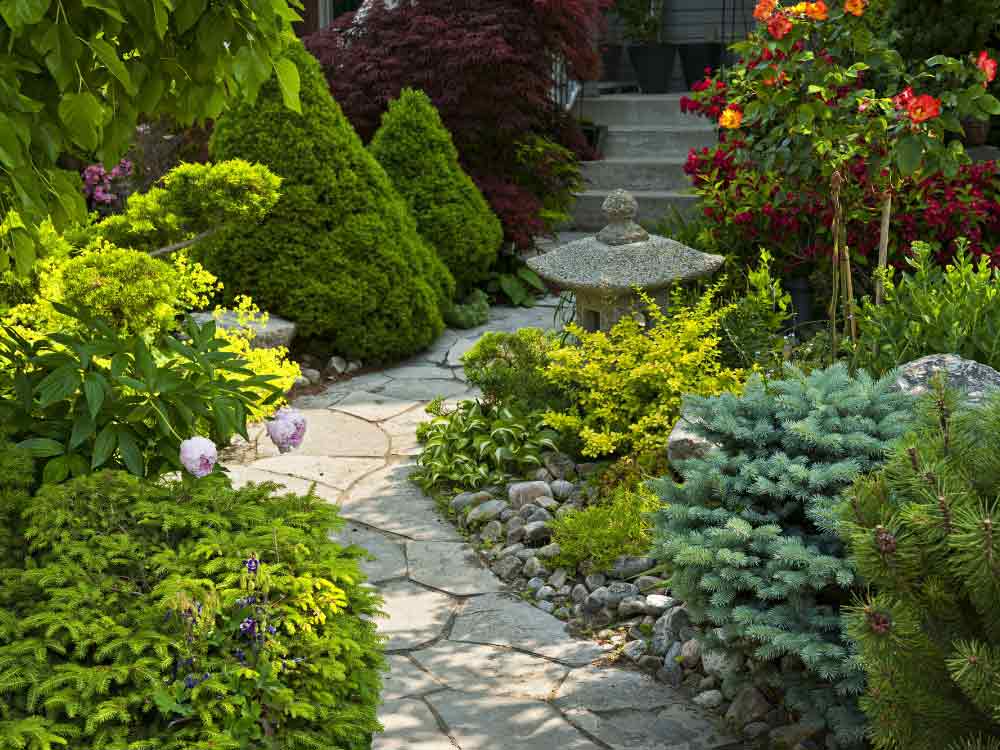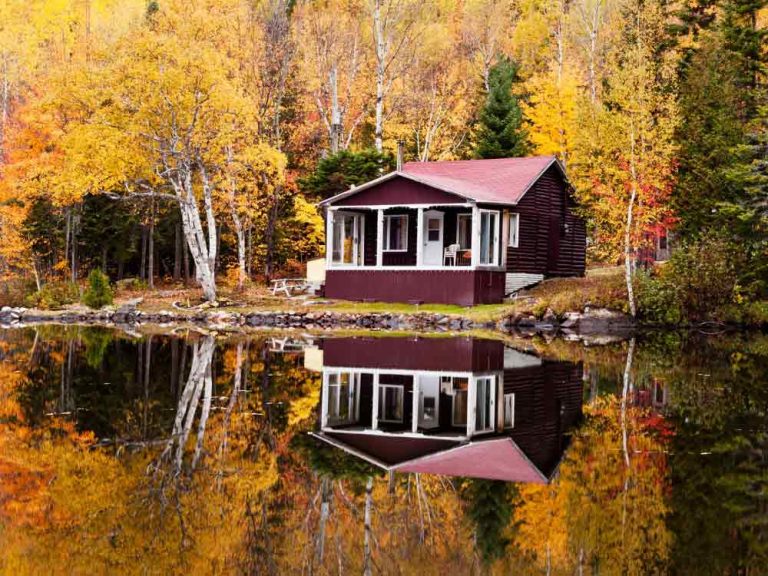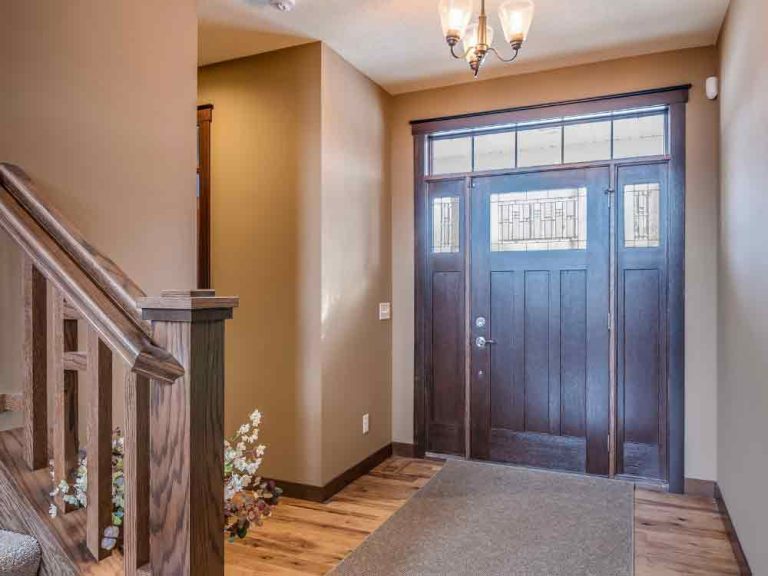30 Backyard Walkway Ideas: Creating Beautiful Pathways for Your Outdoor Space

Creating a backyard walkway is more than just a practical addition; it’s an opportunity to enhance your outdoor living experience and connect different areas of your garden with style and purpose. Thoughtful pathway design plays a crucial role in achieving both functionality and aesthetic appeal, allowing you to express your personal taste while creating accessible and inspiring outdoor spaces.
The backyard walkway concept embraces various materials, patterns, and design styles that not only guide foot traffic but also add visual interest, define garden zones, and increase your property’s overall value.
This article explores a wide range of unique walkway designs for your backyard, showcasing how different styles cater to diverse tastes and practical needs. From rustic stone paths to modern geometric pavers, each design has its own distinct character while serving the essential purpose of connecting your outdoor spaces.
Join us on this journey as we delve into 30 captivating backyard walkway concepts, each offering actionable tips and insights for creating your own beautiful garden pathway.
1. Classic Flagstone Path with Ground Cover Plants
Imagine walking along a charming flagstone pathway where irregular natural stones are set into the ground with soft moss and creeping thyme growing between the gaps. This timeless design creates a cottage garden atmosphere, with the earthy gray and tan tones of the flagstones complementing the vibrant green groundcover.
The pathway gently curves through a lush garden bed, bordered by colorful perennials and flowering shrubs. The natural spacing between stones creates a relaxed, organic feel that invites leisurely strolls through your garden.
The overall mood of this walkway is one of natural beauty and tranquility. The use of natural stone promotes a sense of permanence and connection to the earth, while the living plants between stones soften the hardscape and add year-round interest.
This design encourages slow, mindful walking, making it perfect for meditation gardens or quiet backyard retreats.
- Choose irregular flagstones in varying sizes for a natural, organic appearance.
- Plant low-growing, traffic-tolerant groundcover between stones for softness and color.
- Allow the pathway to curve gently rather than running in straight lines.
- Border with complementary plantings to blend the walkway into your garden design.
2. Modern Concrete Paver Pathway with Gravel Infill
In a contemporary backyard setting, large square concrete pavers create a bold, geometric walkway design. The pavers are spaced evenly with smooth river gravel filling the gaps between each stone, creating a striking visual rhythm as the path extends through the landscape.
The clean lines and neutral gray tones of the concrete contrast beautifully with surrounding ornamental grasses and minimalist plantings, while the gravel provides excellent drainage and a pleasant crunching sound underfoot.
This design concept emphasizes modern simplicity and functionality. The combination of solid pavers and loose gravel creates textural interest while maintaining a sleek, uncluttered aesthetic that complements contemporary architecture and garden design.
The low-maintenance nature of this pathway makes it ideal for busy homeowners who want style without constant upkeep.
- Select large-format concrete pavers in uniform sizes for a modern, geometric look.
- Space pavers consistently to create visual rhythm and pattern.
- Use contrasting gravel colors to highlight the geometric design.
- Keep surrounding plantings minimal and architectural for a cohesive contemporary feel.
3. Rustic Brick Herringbone Pattern Walkway
This charming backyard walkway showcases traditional red clay bricks laid in a classic herringbone pattern. The rich terracotta tones of the bricks create warmth and character, while the intricate pattern adds visual interest and old-world craftsmanship to the garden.
The pathway is edged with weathered timber borders that contain the bricks and define the walkway’s boundaries. Moss has begun to grow in some of the mortar joints, adding to the rustic, established appearance of the path.
The design highlights the timeless appeal of brick paving, where traditional materials and classic patterns create a sense of history and permanence. This walkway evokes the feeling of European cottage gardens and historic estates.
The herringbone pattern not only looks beautiful but also provides structural stability, making this an ideal choice for high-traffic areas.
- Use traditional clay bricks for authentic color and texture.
- Lay bricks in a herringbone pattern for visual interest and structural strength.
- Allow natural aging and moss growth for added character.
- Edge with timber or stone borders to maintain crisp boundaries.
4. Stepping Stone Path Through Lawn
A minimalist backyard walkway features individual round stepping stones set into a lush green lawn. The stones are spaced at a comfortable walking distance, creating a casual path that guides visitors through the grass without dominating the landscape.
Natural light highlights the smooth surface of each stone, which sits slightly above the lawn level for easy mowing around. The simple design allows the surrounding garden and lawn to remain the focal point while providing a practical walking surface.
This design celebrates simplicity and functionality, where less is truly more. The unobtrusive nature of stepping stones preserves the open feeling of your lawn while creating defined pathways that protect grass from wear patterns.
The overall effect is casual and inviting, perfect for cottage-style gardens or yards where you want to maintain maximum green space.
- Choose stepping stones that are large enough for stable footing.
- Space stones approximately one comfortable stride apart.
- Set stones slightly above lawn level for easier maintenance.
- Select stone colors that complement your home and landscape.
5. Decomposed Granite Path with Steel Edging
This modern natural walkway features decomposed granite that creates a smooth, firm walking surface with excellent drainage properties. The warm tan color of the granite provides a neutral backdrop that complements any garden style, while the material compacts naturally for a stable path.
Clean steel edging contains the granite and creates sharp, contemporary lines that define the pathway’s edges. The path winds through native plantings and drought-tolerant landscaping, demonstrating how sustainable materials can create beautiful outdoor spaces.
The inviting feel of this walkway is enhanced by its natural color and texture, which blends seamlessly with surrounding plantings. The permeable surface allows water to soak into the ground rather than running off, making this an environmentally responsible choice.
This design highlights how modern materials and natural elements can combine to create functional, attractive pathways.
- Install sturdy edging to contain the loose granite material.
- Compact the granite thoroughly for a firm walking surface.
- Choose decomposed granite for its natural appearance and drainage properties.
- Plan for occasional raking and replenishing to maintain the path’s appearance.
6. Wood Plank Walkway with Natural Finish
This rustic backyard walkway features thick wood planks arranged lengthwise to create a boardwalk-style path. The natural wood grain and warm honey tones of the timber create an organic aesthetic that feels at home in woodland gardens or naturalistic landscapes.
The planks are supported by a sturdy framework that elevates them slightly above ground level, providing excellent drainage and protecting the wood from soil moisture. Gaps between planks allow rainwater to pass through while adding visual rhythm to the design.
The combination of natural wood and elevated construction creates a unique walking experience that feels like strolling along a forest boardwalk. This design is particularly effective in damp areas or where you want to preserve natural ground cover beneath the path.
The weathered appearance that develops over time adds character and charm to this already attractive walkway.
- Choose rot-resistant wood species for durability and longevity.
- Elevate planks above ground level for proper drainage and wood preservation.
- Apply natural stain or sealant to protect wood while maintaining its organic appearance.
- Space planks with small gaps for drainage and visual interest.
7. Cobblestone Path with Traditional Charm
This traditional backyard walkway showcases authentic cobblestones set in a fan pattern, creating a stunning focal point as the path approaches a garden feature or entrance. The varied gray and brown tones of the rounded stones create rich texture and visual depth.
The cobblestones are set tightly together with sand-swept joints, creating a stable surface while maintaining historic authenticity. The edges of the path are defined with larger border stones that frame the intricate interior pattern.
This design emphasizes old-world craftsmanship and timeless elegance. The labor-intensive installation and careful pattern work result in a walkway that becomes a work of art in itself, elevating your entire garden design.
The textured surface and varied stonework create a path that invites close examination and appreciation.
- Select authentic cobblestones for genuine historic character.
- Plan intricate patterns like fans or circles at key focal points.
- Set stones tightly for stability and professional appearance.
- Use larger border stones to frame and contain the design.
8. Gravel Path with Planted Borders
This casual backyard walkway features crushed gravel that creates an informal, cottage-garden atmosphere. The warm beige gravel provides a neutral walking surface that crunches pleasantly underfoot, signaling your movement through the garden.
Lush planted borders on both sides of the path overflow with perennials, herbs, and flowering plants that soften the walkway’s edges. The gravel path meanders gently through the garden beds, creating a sense of exploration and discovery.
In informal garden settings, every pathway should enhance rather than dominate the landscape, and this design exemplifies that principle. The simple gravel surface allows attention to remain on the surrounding plantings while providing practical access throughout the garden.
The permeable nature of gravel also makes this an environmentally friendly choice that supports healthy soil drainage.
- Choose gravel size that is comfortable for walking but not easily displaced.
- Create curved paths for a more natural, informal appearance.
- Edge with flexible borders to contain gravel while allowing planted edges to overflow.
- Replenish gravel periodically to maintain depth and appearance.
9. Stained Concrete with Decorative Scoring
An elegant backyard walkway showcases stained concrete with decorative scoring that mimics the appearance of individual tiles or pavers. The rich earth-tone stain creates warmth and sophistication, while the precise scoring lines add visual interest and traction.
The smooth concrete surface provides excellent accessibility and easy maintenance, making this an ideal choice for those who need wheelchair access or prefer minimal upkeep. The continuous surface flows smoothly through the landscape without individual units that could shift or settle.
This design highlights how modern concrete techniques can create beautiful, durable pathways that rival traditional materials in appearance. The customizable staining and scoring options allow you to create a truly unique design that complements your home’s architecture.
The seamless installation results in a professional, high-end appearance that increases property value.
- Choose acid stains or colored concrete for rich, variegated color.
- Plan scoring patterns that complement your home’s architectural style.
- Apply sealant to protect the surface and enhance color depth.
- Consider adding non-slip texture in areas that might become slippery when wet.
10. Natural Stone Slab Pathway with Wide Joints
This contemporary backyard walkway features large, irregular natural stone slabs with wide joints filled with pea gravel or crushed stone. The substantial size of each slab creates a bold, modern statement while celebrating the natural beauty of stone.
The generous spacing between slabs allows for creative infill options, from decorative gravel to low-growing plants, adding texture and interest to the pathway. The varied shapes and colors of natural stone ensure that no two paths are exactly alike.
The design illustrates how modern aesthetics can embrace natural materials to create pathways that feel both current and timeless. By using larger stones with deliberate spacing, this walkway achieves a contemporary look while maintaining an organic connection to nature.
The substantial slabs create a sense of permanence and quality that elevates your entire outdoor space.
- Select large stone slabs in complementary shapes and colors.
- Plan joint widths that are proportional to slab sizes for balanced appearance.
- Choose joint filler materials that enhance the overall design aesthetic.
- Ensure proper base preparation for stable, long-lasting installation.
11. Recycled Brick Path with Mixed Patterns
This eco-friendly backyard walkway showcases reclaimed bricks arranged in various patterns including basket weave, running bond, and herringbone sections. The mixed patterns create visual zones along the path while the weathered appearance of recycled bricks adds instant character and history.
The varied colors of aged bricks—from soft pinks to deep reds and purples—create a rich, complex color palette that adds warmth to the garden. Small plants and moss are encouraged to grow in some joints, enhancing the aged, established appearance.
The combination of recycled materials and varied patterns creates a unique walkway that tells a story while supporting sustainable design principles. This path proves that environmentally conscious choices can result in stunning visual appeal.
The textured surface and historical character make this walkway a conversation piece that adds distinction to your garden.
- Source reclaimed bricks from demolition sites or architectural salvage yards.
- Mix patterns thoughtfully to create intentional design zones.
- Allow natural weathering and plant growth for authentic aged appearance.
- Use flexible mortar or sand joints to accommodate slight variations in brick sizes.
12. Poured Concrete Path with Embedded Decorative Elements
This artistic backyard walkway features smooth poured concrete embedded with decorative elements like colorful glass pieces, river stones, or ceramic tiles. The embedded materials create a mosaic effect that transforms a simple concrete path into a work of art.
The creative design adds personality and whimsy to the garden while maintaining the practical benefits of a solid concrete surface. The smooth areas provide easy walking, while the embedded elements add visual interest and texture that catches the eye.
This design celebrates creativity and individual expression, where the pathway becomes a canvas for artistic experimentation. The embedded elements can reflect personal interests, color preferences, or simply add unexpected beauty to the garden.
The durable concrete surface ensures that your artistic creation will remain beautiful for many years.
- Plan your design carefully before pouring concrete.
- Press decorative elements into fresh concrete at the right consistency.
- Seal the finished surface to protect embedded materials and enhance colors.
- Consider creating themed sections or patterns for added visual interest.
13. Mulch Woodland Path with Log Edging
This natural backyard walkway features a thick layer of wood mulch that creates a soft, cushioned walking surface perfect for woodland gardens or naturalistic landscapes. The rich brown color of the mulch contrasts beautifully with surrounding green foliage and forest vegetation.
Natural log edging contains the mulch while reinforcing the organic, woodland aesthetic. The logs are laid lengthwise along the path’s edges, creating rustic borders that blend seamlessly with the natural environment.
This design emphasizes connection to nature and minimal environmental impact. The mulch pathway is one of the most affordable and eco-friendly options available, while providing a comfortable surface that feels wonderful underfoot.
The soft material also reduces noise and creates a peaceful walking experience through your garden.
- Use hardwood mulch for longer-lasting color and slower decomposition.
- Install log edging to contain mulch and define path boundaries.
- Layer mulch thickly (3-4 inches) for best weed suppression and appearance.
- Replenish mulch annually to maintain depth and fresh color.
14. Slate Tile Pathway with Geometric Design
This sophisticated backyard walkway showcases square slate tiles arranged in a precise geometric pattern. The natural color variations in slate—from charcoal gray to purple and green undertones—create subtle visual interest within the structured layout.
The tiles are set with narrow joints that emphasize the geometric precision while allowing for small variations in the natural stone. The pathway’s straight lines and sharp edges create a formal appearance that complements traditional or contemporary architecture.
The design highlights slate’s natural elegance and durability, creating a high-end appearance that requires minimal maintenance. The smooth surface provides safe, accessible walking while the natural stone remains cool underfoot even on hot summer days.
This walkway demonstrates how structured patterns can showcase natural materials to beautiful effect.
- Choose slate tiles in consistent sizes for geometric precision.
- Install on a properly prepared base for long-lasting stability.
- Seal slate to enhance color depth and protect against staining.
- Keep joints narrow and consistent for a refined, professional appearance.
15. Permeable Paver Path with Grass Joints
This environmentally conscious backyard walkway features permeable pavers with grass growing in the open joints between units. The grid-like pattern allows grass to thrive while providing solid surfaces for walking and even occasional vehicle access.
The green grass contrasts beautifully with the pavers, creating a living pathway that manages stormwater naturally while maintaining usable surface area. This design works particularly well for side yards, driveways, or anywhere water management is a concern.
The combination of hardscape and living grass creates a sustainable solution that reduces runoff while adding visual softness to the landscape. This walkway proves that environmental responsibility and aesthetic appeal can work hand-in-hand.
The permeable design supports healthy soil and reduces urban heat island effects in your yard.
- Choose permeable pavers designed specifically for grass integration.
- Prepare base layers properly for drainage and grass root growth.
- Select hardy grass varieties that tolerate moderate foot traffic.
- Maintain grass areas regularly for best appearance and functionality.
16. River Rock Mosaic Pathway
This artistic backyard walkway features smooth river rocks arranged in intricate mosaic patterns that create stunning visual designs. The stones are set vertically in mortar, showing their smooth faces to create flowing patterns that might include waves, spirals, or geometric designs.
The varied colors of river rocks—white, gray, tan, and black—allow for complex color patterns and artistic expression. The time-intensive installation results in a truly unique pathway that becomes a garden focal point and conversation starter.
This design exemplifies garden artistry at its finest, where patience and creativity combine to transform simple stones into elaborate artwork. The textured surface and flowing patterns create a sensory experience that delights both visually and underfoot.
This walkway represents a significant investment of time but results in an irreplaceable garden feature.
- Sort river rocks by size and color before beginning installation.
- Plan intricate patterns carefully and consider sketching designs first.
- Set stones in strong mortar for permanent, stable installation.
- Fill all gaps completely to prevent shifting and weed growth.
17. Textured Concrete with Stamped Pattern
This versatile backyard walkway features textured concrete stamped with patterns that mimic natural stone, brick, or tile. The realistic texture and carefully chosen color create the appearance of expensive natural materials at a fraction of the cost.
The continuous concrete surface provides excellent durability and accessibility while the stamped pattern adds visual interest and traction. The walkway can be customized with various patterns and colors to match your home’s exterior and landscape design.
The design showcases how modern concrete techniques create beautiful, budget-friendly alternatives to traditional materials. The seamless installation and minimal maintenance requirements make this an ideal choice for practical homeowners who don’t want to sacrifice style.
The slip-resistant texture also provides safety in wet weather conditions.
- Choose stamp patterns that complement your home’s architectural style.
- Select color combinations that look natural and coordinate with surrounding materials.
- Apply sealant regularly to maintain color and protect the surface.
- Consider adding sawcut control joints for a more authentic appearance.
18. Garden Path with Mixed Ground Covers
This living backyard walkway features a combination of stepping stones and various low-growing ground covers that create a lush, planted pathway. Creeping thyme, moss, sedum, and other hardy ground covers fill the spaces between stones, creating a tapestry of colors and textures.
The fragrant foliage releases pleasant scents when brushed or stepped upon, adding a sensory dimension to your garden walks. The varied bloom times of different ground covers ensure seasonal interest throughout the growing season.
This design celebrates the integration of hardscape and plantings, where the path becomes part of the living garden rather than simply crossing through it. The soft, planted surface feels wonderful underfoot and supports beneficial insects and pollinators.
This walkway exemplifies sustainable design that benefits both people and the environment.
- Select ground covers rated for foot traffic in your climate zone.
- Space stepping stones to protect delicate plantings from excessive wear.
- Choose plants with varied bloom times for season-long interest.
- Water and maintain ground covers regularly until well established.
19. Bluestone Path with Formal Layout
This elegant backyard walkway showcases premium bluestone pavers arranged in a formal, straight layout. The distinctive blue-gray color of bluestone creates a sophisticated appearance that complements both traditional and contemporary architecture.
The stones are cut into rectangular shapes and laid in a running bond pattern with tight joints, creating clean lines and professional appearance. The smooth, cleft surface provides safe walking while showcasing bluestone’s natural beauty and subtle color variations.
The design emphasizes classic elegance and timeless quality. Bluestone’s durability and non-slip surface make it ideal for high-traffic areas, while its distinguished appearance adds significant value to your property.
This walkway represents an investment in permanent beauty that will serve your home for generations.
- Choose thermal or natural cleft finish based on desired texture.
- Cut stones into consistent sizes for formal, structured appearance.
- Install with narrow joints filled with stone dust or polymeric sand.
- Seal bluestone to deepen color and resist staining.
20. Crushed Oyster Shell Pathway
This coastal-inspired backyard walkway features crushed oyster shells that create a bright white path reminiscent of beach walks. The shells compact into a firm walking surface while maintaining permeability for excellent drainage.
The brilliant white color brightens shaded garden areas and creates stunning contrast with surrounding green plantings. The shells reflect light beautifully and add a beachy, relaxed atmosphere to your outdoor space.
This design celebrates coastal style and sustainable material use, as oyster shells are a renewable byproduct of the seafood industry. The crunchy texture and bright appearance create a unique sensory experience that evokes vacation memories.
This pathway works particularly well in coastal regions or for homeowners who want to bring beach vibes to their inland gardens.
- Source shells locally when possible to reduce transportation impacts.
- Install fabric underlayment to prevent shells from sinking into soil.
- Edge pathways to contain loose shell material.
- Replenish shells periodically to maintain color and depth.
21. Reclaimed Railway Sleeper Steps
This rustic backyard walkway incorporates weathered railway sleepers (railroad ties) to create substantial steps and path edging. The massive timbers provide sturdy support for level changes while their weathered appearance adds instant character and history to the landscape.
The dark, creosote-treated wood contrasts dramatically with lighter gravel or stone infill between the timbers. The heavy-duty construction can handle significant grade changes and heavy traffic while maintaining a distinctly rustic, industrial aesthetic.
The combination of substantial timber and loose aggregate creates a low-maintenance pathway that suits rural properties, hillside gardens, or anywhere you need durable steps that blend with natural surroundings.
The weathered appearance improves over time, developing rich patina and character.
- Source authentic railway sleepers for genuine character and durability.
- Anchor timbers securely for safety on slopes and steps.
- Fill between timbers with gravel, crushed stone, or gravel for drainage.
- Consider alternatives like new landscape timbers if concerns about creosote exist.
22. Decorative Tile Pathway with Mediterranean Flair
This colorful backyard walkway features decorative ceramic tiles arranged in vibrant patterns that evoke Mediterranean courtyards and Spanish architecture. The hand-painted tiles showcase intricate designs in blues, yellows, terracottas, and greens that create a festive, artistic atmosphere.
The tiles are set in concrete or mortar, creating a permanent, weather-resistant surface that brings color and pattern to the garden year-round. The smooth surface cleans easily while the durable ceramic withstands weather and traffic.
This design exemplifies how bold color and pattern can transform a simple pathway into a garden highlight. The artistic tiles reflect personal style and cultural influences, making your walkway a true expression of individual taste.
The eye-catching design creates a memorable feature that defines your garden’s character.
- Select frost-proof tiles if you live in cold winter climates.
- Plan patterns carefully to ensure proper tile placement and alignment.
- Seal grout lines to prevent staining and water penetration.
- Consider mixing patterned and solid tiles for balanced visual interest.
23. Pine Bark Mulch Natural Trail
This soft backyard walkway features natural pine bark mulch that creates a springy, comfortable walking surface perfect for casual garden paths. The reddish-brown color adds warmth to the landscape while the natural material blends seamlessly with woodland or informal garden styles.
The loose mulch conforms to natural grade changes and curves easily around garden beds and plantings. The fresh pine scent adds a pleasant sensory element to your garden walks, while the soft surface provides comfortable, quiet walking.
This design emphasizes natural, affordable materials that work with rather than against the existing landscape. The mulch pathway requires minimal installation effort and can be adjusted or relocated easily as your garden evolves.
The organic material gradually breaks down, enriching surrounding soil as it ages.
- Choose shredded pine bark for longest-lasting color and coverage.
- Install landscape fabric underneath to suppress weeds.
- Edge pathways clearly to contain loose mulch material.
- Apply thick layers (4-6 inches) and replenish annually for best results.
24. Sandstone Crazy Paving Design
This distinctive backyard walkway showcases irregular sandstone pieces fitted together in a crazy paving pattern. The warm honey and tan tones of sandstone create a sun-drenched appearance, while the puzzle-like fitting of irregular shapes adds organic visual interest.
Each piece is carefully selected and cut to fit tightly with neighbors, creating a stable surface despite the irregular shapes. The varied sizes and natural edges of the stones create a relaxed, organic aesthetic that suits cottage gardens and informal landscapes.
The design celebrates the natural beauty of stone while showcasing the craftsmanship required to fit irregular pieces into coherent patterns. The textured surface and warm colors create an inviting pathway that feels established and permanent.
This walkway develops character as weather naturally ages the sandstone surfaces.
- Select sandstone pieces in varied sizes for interesting composition.
- Plan layout carefully to minimize large gaps between stones.
- Fill joints with sand, stone dust, or mortar depending on desired appearance.
- Seal sandstone to enhance color and protect against weathering if desired.
25. Rubber Paver Safety Path
This practical backyard walkway features rubber pavers that provide cushioned, slip-resistant surfaces ideal for play areas, pool surrounds, or anywhere safety is paramount. The interlocking tiles come in various colors and can be arranged in patterns or solid fields.
The forgiving surface reduces injury risk from falls while the porous material allows water to drain through quickly, eliminating puddles and slippery conditions. The durable rubber withstands weather extremes and heavy use without cracking or deteriorating.
This design prioritizes safety and functionality without sacrificing aesthetic appeal. The modern material offers practical benefits that traditional paving cannot match, making it an intelligent choice for family-friendly outdoor spaces.
The easy installation and potential for DIY makes this an accessible option for many homeowners.
- Choose rubber pavers specifically rated for outdoor use and UV resistance.
- Select colors that coordinate with your home and landscape design.
- Install over well-drained base for best performance and longevity.
- Clean regularly to maintain appearance and prevent algae growth.
26. Limestone Ashlar Pattern Walkway
This sophisticated backyard walkway features rectangular limestone blocks laid in an ashlar pattern with varied sizes creating visual rhythm. The soft gray and cream tones of limestone provide elegant neutral backdrop for surrounding plantings and architecture.
The precisely cut edges and tight joints create a refined, formal appearance suitable for upscale gardens and traditional homes. The smooth surface provides comfortable walking while showcasing limestone’s natural beauty and subtle fossil details.
The design emphasizes quality materials and expert craftsmanship, creating a walkway that enhances property value and garden enjoyment. The natural stone ages gracefully, developing subtle patina that adds depth and character over time.
This pathway represents a significant investment that pays dividends in beauty and durability.
- Select limestone grades appropriate for your climate and weather conditions.
- Plan ashlar patterns with varied sizes for optimal visual interest.
- Install with proper base preparation for crack-free longevity.
- Seal limestone to protect against staining from leaves and organic materials.
27. Black Lava Rock Contemporary Path
This dramatic backyard walkway features angular black lava rock that creates bold contrast with surrounding greenery. The dark, porous stones absorb heat during the day and release it slowly, creating warmth in evening hours.
The rough texture and irregular shapes of lava rock add strong visual interest while the lightweight material makes installation easier than traditional stone. The path winds through modern plantings of ornamental grasses and architectural plants that complement the contemporary aesthetic.
This design makes a strong style statement, using dramatic color contrast and contemporary materials to create a memorable garden feature. The volcanic rock brings primal energy and textural intensity to the landscape.
This walkway works best in modern or Asian-inspired gardens where bold contrasts are celebrated.
- Source lava rock in consistent size ranges for easier installation.
- Create strong borders to contain irregular stone shapes.
- Combine with lighter aggregates or gravel for color contrast if desired.
- Consider the heat-absorbing properties when placing near seating areas.
28. Brick and Stone Combination Pathway
This classic backyard walkway combines traditional red brick borders with natural stone infill to create a distinguished, formal appearance. The brick edging creates crisp lines and contains the central stone sections, while the combination of materials adds visual richness.
The warm red tones of brick complement the varied grays and tans of natural stone, creating a color palette that works with many architectural styles. The different textures and materials create depth and interest along the pathway.
The design showcases how combining materials can create results more interesting than either material alone. The formal brick borders provide structure while the natural stone adds organic beauty and texture.
This walkway suits traditional homes and gardens where classic materials create timeless appeal.
- Match brick color to home exterior for coordinated appearance.
- Set brick borders first to establish clean lines before filling center.
- Choose stone sizes that fit well within brick-bordered dimensions.
- Maintain consistent height between different materials for safe walking.
29. Grass Paver Grid with Integrated Lawn
This innovative backyard walkway features a grid system that allows grass to grow through while providing solid support for occasional vehicle traffic or regular foot traffic. The open-celled grid distributes weight to prevent soil compaction while maintaining a green, living surface.
The barely visible grid structure creates a lawn-like appearance while enabling functionality that grass alone cannot provide. This works excellently for side yards, overflow parking, or paths that see mixed pedestrian and vehicle use.
The design demonstrates intelligent problem-solving where form and function merge seamlessly. The living grass surface stays cool, manages stormwater naturally, and maintains your yard’s green aesthetic while providing necessary durability.
This pathway represents smart design that solves multiple challenges simultaneously.
- Choose grid systems rated for your intended use level and vehicle weights.
- Prepare base properly with gravel layers for support and drainage.
- Select grass varieties suited to your climate and use patterns.
- Maintain grass areas with regular mowing and fertilization.
30. Travertine Pavers with Natural Edge
This elegant backyard walkway features premium travertine pavers with natural chiseled edges that create a sophisticated, Old World appearance. The warm beige and ivory tones of travertine add subtle elegance to the garden, while the natural edge treatment provides texture and visual interest.
The stones are laid in a random pattern that showcases each paver’s unique characteristics and natural beauty. The wide joints are filled with sand or grout, depending on the desired level of formality and weed resistance.
The design beautifully balances refined elegance with organic natural elements, creating a walkway that feels both luxurious and grounded. This path serves as a showcase for quality materials and expert installation that elevates your entire outdoor space.
The subtle elegance of travertine ensures this walkway remains stylish and appealing through changing trends.
- Select travertine with filled holes for smoother, more durable surfaces.
- Choose chiseled edge treatment for authentic, natural appearance.
- Seal travertine to prevent staining and protect against freeze-thaw damage.
- Plan random patterns thoughtfully to ensure balanced distribution of sizes.
Conclusion
Creating a backyard walkway is an art that blends practicality, beauty, and personal expression. Each design concept highlighted here offers unique insights into how to incorporate pathways that enhance both the functionality and aesthetic appeal of your outdoor space.
Whether you prefer the rustic charm of natural stone, the formal elegance of brick patterns, or the contemporary simplicity of modern concrete, these ideas provide a wealth of inspiration for your garden transformation. Don’t hesitate to experiment with these concepts, combining elements or adapting designs to create pathways that reflect your personality and serve your specific needs.
The right walkway does more than connect point A to point B—it guides experiences, defines spaces, and adds lasting value to your home and garden.






